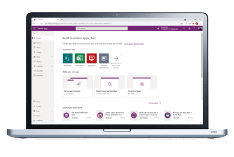Table of contents
Microsoft Project makes it easy to organize, plan, and execute a project. This includes everything from small projects to large initiatives. And when it comes to managing even the most complex projects, the version of project you are using, whether Project 2007, Project 2010, Project 2013, Project 2016, or Microsoft Project 2019, they all have robust scheduling capabilities.
Let’s take a look at how it can help by looking at some key Microsoft Project features that set it apart from any other Project alternative.
1. Different Creation Styles
Some approaches to project management rely on using a specific style or layout. This can range from a simple chart to a complicated mess of ideas.
Microsoft Project breaks this mold by offering a truly responsive project management tool. With it, users can choose from boards, lists in a grid view, and visual timelines. This allows users to plan different projects with an approach perfectly suited to the task.
For example, a project that has teams working on independent tasks may use boards to plan. This would allow each team to focus on their specific goals. Meanwhile, the manager can still look at how the progress of each team is working toward the company’s overall goal.
On the other hand, a project that requires work to be done in separate stages by separate people may use visual timelines. A timeline or Gantt chart allows one to see how each step in the process will influence the completion of the project.
By offering these different planning methods. MS Project helps businesses create a more effective plan. This can lead to new ideas in the planning process. It can also simply lead to more successful projects.

2. Flexible Project Schedule
Anyone who has planned and completed a project knows that plans often need to be altered. Part of the planning process involves shifting tasks or details around in order to find out what works best at specific times.
With some project management software, this can be a chore. Altering a day’s schedule can throw off that entire day. This may result in the user having to reschedule the entire day from the start, just to make a quick change.
This is where Microsoft Project stands out. MS Project is a powerful project management tool that utilizes a flexible task management system that allows for altering the project plan.
If a user realizes a specific task needs to be moved from one day to the next, this can be done with ease. It can simply be cut out and moved where it needs to go. When this is done, the plans for both days will adjust to compensate for this change.
The flexibility of this project planning software is a response to the real world. It helps make sure projects work in the face of shifting details or unexpected problems.

3. Display Data
Another key feature of Microsoft Project is its ability to provide data relating to projects. More data and information can help a user make informed decisions. This can help at all steps of project planning.
The portfolio management options can help near the beginning. A user can build different project pathways for a single project. Then, they can compare these project files side by side in order to determine which is best.
Comprehensive analytics can help at any stage of the process. They can help allocate resources during planning and detect problems while a project is in progress. They can even help show what went right and what went wrong after the job is done.
The way Microsoft Project takes in and then displays data can be a huge asset. It can change the way a job is planned or executed. In the hands of properly trained users, it can dramatically increase a project’s efficiency. Imagine understanding a projects overall status with the click of a button then communicating that to your team (Resource Manager, team member, etc.).
Related















